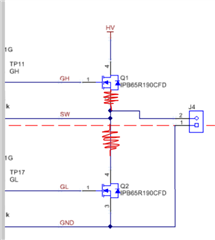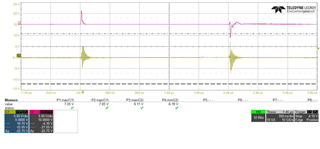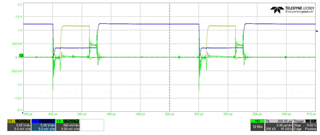I have an application that I need to switch that needs to switch 110VDC. Right now, I am using the development kit per section 5 of the User Guide but I am not getting the same results as seen in Figure 2 and 3. I am seeing some ringing on My High Side (Channel 1 - Yellow) and Low Side (Channel 3- Blue). My output signal unloaded (Channel 2 - Pink) seems to be working as desired. I am noting the FETs are getting warm to the touch as well, and I'm concerned they are turning on when they should be off causing this. Is there something I am missing that would stop the ringing from occurring? As the HV-GND power supply is increased it get worse, see the images below.
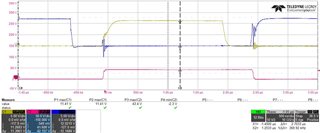
40VDC at HV and GND
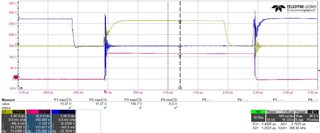
110VDC at HV and GND


